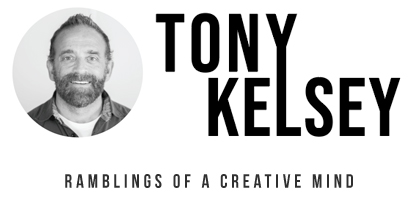It’s a crazy, cluttered world out there, especially when it comes to marketing and advertising. There’s more brand pollution now than ever before. With the average consumer being hit by a constant barrage of branding, advertising, messaging and hype, how does a company stand a chance at standing out and connecting with potential consumers?
Theoretically, it’s easy. Just be compelling.
When a company becomes something other than ordinary it suddenly stands out as meaningfully differentiated from others in the same market or industry. And, it’s at that point where an emotional connection is made between the company and their customers. It all happens through a relevant and compelling Brand Story.
Here’s six steps that are extremely useful in developing a compelling brand story.
1) Develop Your Back Story
Back story in fiction writing is a set of events or history invented to lend depth or believability to the main story. In branding it is the background necessary to explain the problem that must be solved for the brand. It includes an thorough assessment of the brand’s past and existing culture as well as problems and opportunities it faces in the marketplace.
“Backstories influence expectations, perceptions and, ultimately, how consumers value a product,” says Dan Ariely, professor of psychology and behavioral economics at Duke University and the author of New York Times bestselling books, “Predictably Irrational” and “The Upside of Irrationality.”
“Think about the experience of drinking coffee,” Ariely says. “Part of it is the actual smell and the sensation on your tongue, but the other part is what you expect it feels like to drink regular coffee versus . . . coffee that was picked in the mountains of Indonesia.”
2) Create a Brand Persona
Developing a brand persona simply means humanizing it, with a voice and values that come across as genuine and can connect with the consumer.
It’s a highly important step in the process, as brands that successfully take on human like traits are the most revered. People seek them out, become attached to them and assign human personalities to them. After all, brands are like friends, hanging out with them says something about us to the people we know and encounter.
A good example of a company who has successfully created a likable brand persona is Target. Not only has Target clearly distinguished themselves from competitors like Walmart and Kmart by skipping the whole ‘low price’ thing, but they’ve done a great job of incorporating style, design and lifestyle into content. Plus they’ve employed hip, trendy language in everything they do, which has become their friendly, fun brand voice.
3) Develop a Story Brief
A story brief serves the purpose of outlining the entire brand story in ways that promote an empathetic understanding of the brand. It should include story or narrative arc charts, which serve to establish a chronology of the plot or action. This is also the time when you’ll want to develop a strategy around the creative supporting the story and the methods for telling it. Imagine the story brief as a detailed game plan or internal mission brief.
Here’s a few considerations to keep in mind when developing a story brief:
Tell a real story. Craft your brand story around people and their dreams, not around your products and business challenges or successes. “The best brand stories are irresistible, compelling and provocative,” says Mary van de Wiel, founder, CEO and global brand therapist at ZingYourBrand.com. “The most memorable brand stories tell the unexpected, speak directly to the heart or dare you to live life to the fullest.”
Keep creative simple. The look of your story should reflect the mood and tone of it, and nothing more. A polished story cluttered by elaborate effects or overwrought imagery will only present a disjointed message.
Serialize your story. Find ways and places to tell the story in glimpses. Keep people coming back to discover more.
Give your story momentum. Make it exciting. Build revelations and twists into what occurs over time. Brand stories come alive for people when they feel they are participating in it.
_______
“Mass advertising can help build brands, but authenticity is what makes them last. If people believe they share values with a company, they will stay loyal to the brand.” ― Howard Schultz, Pour Your Heart Into It: How Starbucks Built a Company One Cup at a Time
Photo courtesy of peoplecreations.


Great!